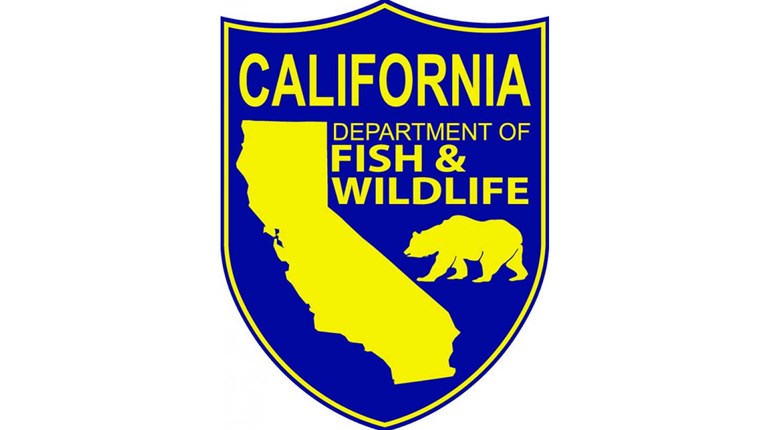
Continuing his efforts to increase access to public lands, U.S. Secretary of the Interior Ryan Zinke will open more than more 251,000 acres to new or expanded hunting and fishing opportunities on 30 national wildlife refuges across the U.S. Fish and Wildlife Service’s (USFWS) National Wildlife Refuge System.
This expansion brings the number of units open to public hunting up to 377, and the number where fishing is permitted to 312. The final rule also takes steps to simply regulations to more closely match state hunting and fishing regulations.
“American sportsmen and women contribute over a billion dollars a year to fund conservation. Without hunters and anglers, we wouldn't be able to conserve wildlife and habitat; and, without access to our public lands like national wildlife refuges, many hunters would have nowhere to go,” said Secretary Zinke. “The last thing I want to see is hunting to become an elite sport, rather than a tradition passed on from generation to generation. Today’s announcement protects critical conservation funding, and ensures sportsmen have access to public lands for generations to come.”
Hunting and/or fishing will be opened or expand on the following refuges:
Arkansas
• Felsenthal National Wildlife Refuge: Expand existing migratory game bird, upland game and big game hunting.
California
• San Pablo Bay National Wildlife Refuge: Expands existing migratory game bird hunting.
Florida
• Lake Woodruff National Wildlife Refuge: Opens wild turkey hunting for the first time.
Illinois
• Cypress Creek National Wildlife Refuge: Expands existing migratory game bird, upland game and big game hunting.
Illinois and Missouri
• Great River National Wildlife Refuge: Expands existing migratory game bird, upland game and big game hunting.
Illinois and Wisconsin
• Hackmatack National Wildlife Refuge: Opens migratory game bird, upland game and big game hunting to all legal species in the State of Illinois.
Indiana
• Patoka River National Wildlife Refuge: Expands existing migratory game bird, upland game, and big game hunting.
Maine
• Moosehorn National Wildlife Refuge: Expands existing migratory game bird, upland game and big game hunting.
• Rachel Carson National Wildlife Refuge: Expands existing white-tailed deer and wild turkey hunting.
Maine and New Hampshire
• Umbagog National Wildlife Refuge: Opens wild turkey hunting for the first time, and expand existing migratory game bird, upland game and big game hunting.
Maryland
• Blackwater National Wildlife Refuge: Expands existing migratory game bird and big game hunting.
• Patuxent Research Refuge: Expands existing white-tailed deer and wild turkey hunting.
Michigan
• Shiawassee National Wildlife Refuge: Opens hunting of certain migratory bird, small game, and furbearers, and expand existing migratory game bird and big game hunting.
Minnesota
• Glacial Ridge National Wildlife Refuge: Opens certain gamebird and small mammal hunting for the first time, and expand existing migratory game bird, upland game and big game hunting.
Montana
• Charles M. Russell National Wildlife Refuge: Expands existing big game hunting.
• Swan River National Wildlife Refuge: Opens big game hunting for the first time.
New Jersey
• Edwin B. Forsythe National Wildlife Refuge: Opens wild turkey and squirrel hunting for the first time, and expand existing migratory game bird and big game hunting.
New Jersey and New York
• Wallkill River National Wildlife Refuge: Expands existing migratory game bird hunting.
New Mexico
• Sevilleta National Wildlife Refuge: Opens Eurasian-collared dove and Gambel’s quail hunting, and expand existing migratory game bird hunting.
North Dakota
• Clark Salyer National Wildlife Refuge: Opens moose hunting for the first time.
• Lostwood National Wildlife Refuge: Opens moose hunting for the first time.
Ohio
• Cedar Point National Wildlife Refuge: Opens white-tailed deer hunting for the first time.
• Ottawa National Wildlife Refuge: Opens hunting of certain gamebirds, small mammals and furbearers for the first time, and expand existing migratory game bird and big game hunting.
Oregon
• Cold Springs National Wildlife Refuge: Expands existing migratory game bird, upland game and big game hunting.
• Upper Klamath National Wildlife Refuge: Expands existing migratory game bird hunting.
Pennsylvania
• Cherry Valley National Wildlife Refuge: Expands existing migratory game bird, upland game and big game hunting.
• John Heinz National Wildlife Refuge at Tinicum: Opens white-tailed deer hunting for the first time.
Utah
• Bear River Migratory Bear Refuge: Expands existing migratory game bird and upland game hunting.
Wisconsin
• Trempealeau National Wildlife Refuge: Opens hunting of certain gamebirds, small mammals and furbearers for the first time, and expand existing migratory game bird and big game hunting.
More than 53 million Americans visit refuges every year. National wildlife refuges provide habitats for thousands of species and access to world-class recreation. The National Wildlife Refuge System is made up of 566 national wildlife refuges and 38 wetland management districts.
































